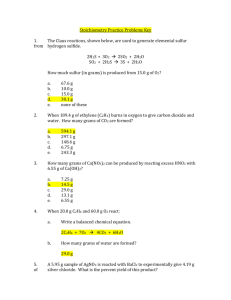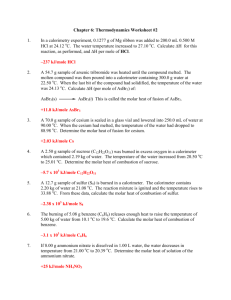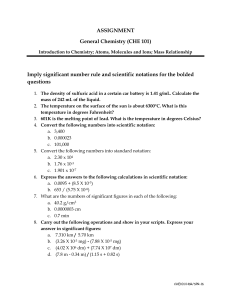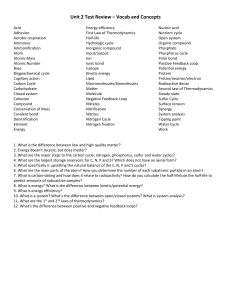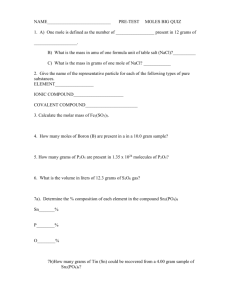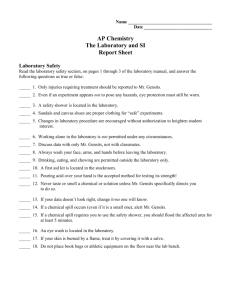Chapter 6: Thermodynamics Worksheet #1 1. Define the following
advertisement
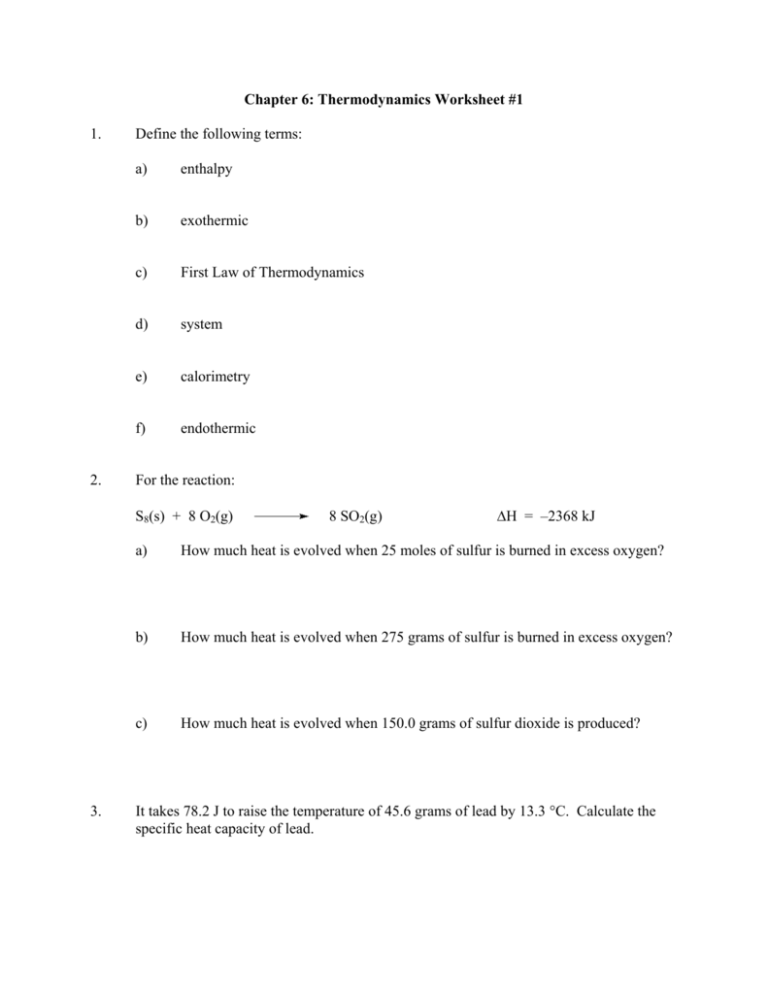
Chapter 6: Thermodynamics Worksheet #1 1. 2. Define the following terms: a) enthalpy b) exothermic c) First Law of Thermodynamics d) system e) calorimetry f) endothermic For the reaction: S8(s) + 8 O2(g) 3. 8 SO2(g) H = –2368 kJ a) How much heat is evolved when 25 moles of sulfur is burned in excess oxygen? b) How much heat is evolved when 275 grams of sulfur is burned in excess oxygen? c) How much heat is evolved when 150.0 grams of sulfur dioxide is produced? It takes 78.2 J to raise the temperature of 45.6 grams of lead by 13.3 C. Calculate the specific heat capacity of lead. 4. In a calorimetry experiment, 0.1277 g of Mg ribbon was added to 200.0 mL 0.500 M HCl at 24.12 oC. The water temperature increased to 27.10 oC. Calculate H for this reaction, as performed, and H per mole of HCl. 5. A 54.7 g sample of arsenic tribromide was heated until the compound melted. The molten compound was then poured into a calorimeter containing 300.0 g water at 22.50 oC. When the last bit of the compound had solidified, the temperature of the water was 24.13 oC. Calculate H (per mole of AsBr3) of: AsBr3(s) AsBr3(ℓ) This is called the molar heat of fusion of AsBr3. 6. If 8.00 g ammonium nitrate is dissolved in 1.00 L water, the water decreases in temperature from 21.00 oC to 20.39 oC. Determine the molar heat of solution of the ammonium nitrate.
